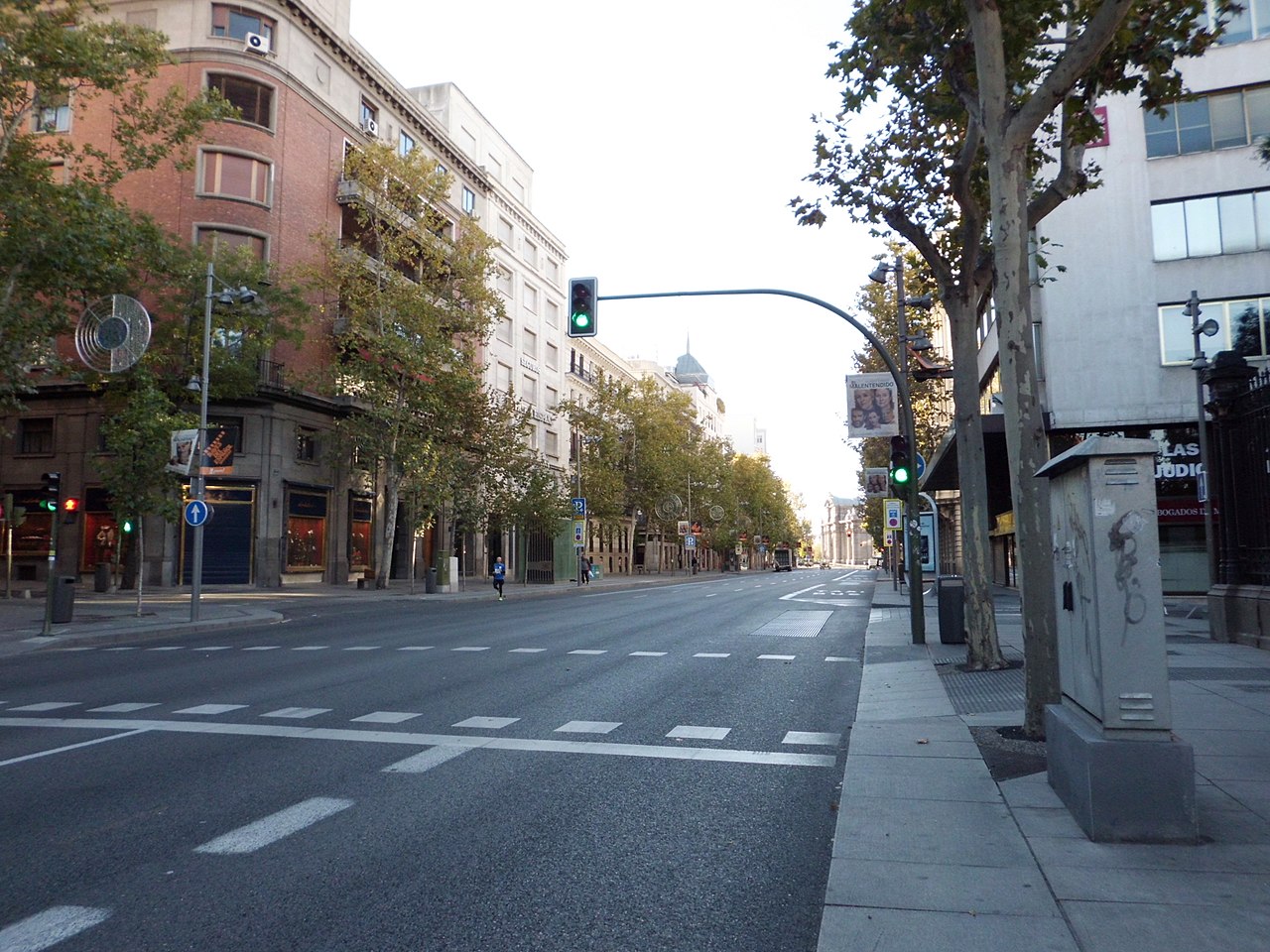
La Serrano street in Madrid It is famous for several reasons. Perhaps the most recent is that, with data published at the beginning of 2023, it is the one with the most expensive square meter in Spain. It has a cost of more than eleven thousand euros and only comes close to the Passeig de Gracia in Barcelona.
But it is also famous because it houses the most exclusive shops in the capital. You can find in it stores from all the luxury multinationals and the glamorous. And, in general, it stands out for its history and monuments. For all this, we are going to tell you everything you need to know about Calle Serrano in Madrid.
Serrano street location
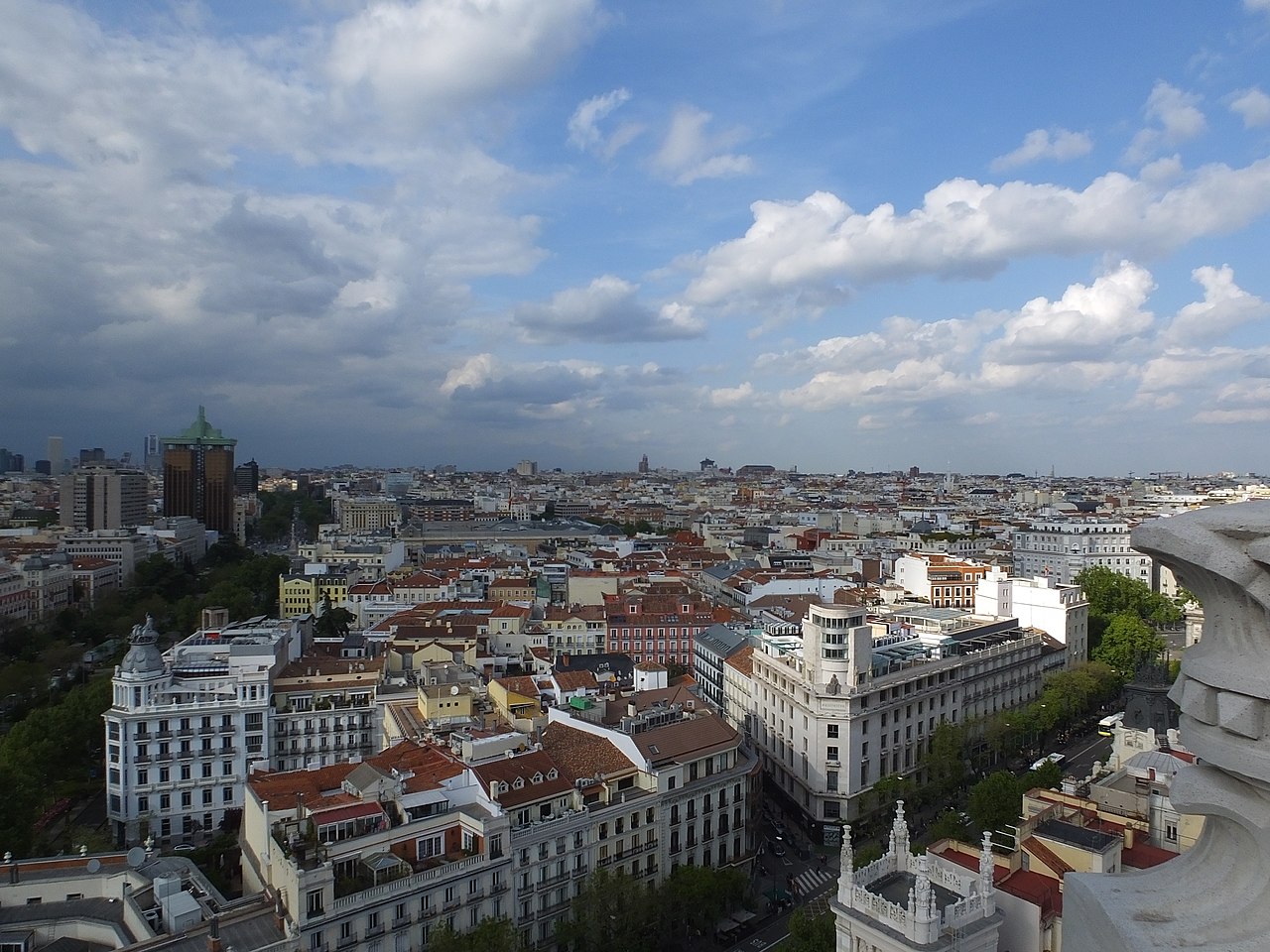
View of the Salamanca district
It is a long street that starts at the Independence Square, next to that of Alcalá and reaches the square of the Republic of Ecuador to end at Príncipe de Vergara street. It runs almost completely parallel to the Paseo de la Castellana and crosses several districts of the capital. Among these, those of Chamartín, Recollects, own Castellana, The Viso e Latin America. However, most of it is in the Neighborhood of salamanca.
It also crosses other equally popular streets in Madrid. This is the case of those of Goya, Juan Bravo, María de Molina, Joaquín Costa or Concha Espina avenue. Therefore, it is a way very central where, in addition to luxurious buildings, monuments and shops, you will find numerous bars and restaurants with terraces.
history of this street
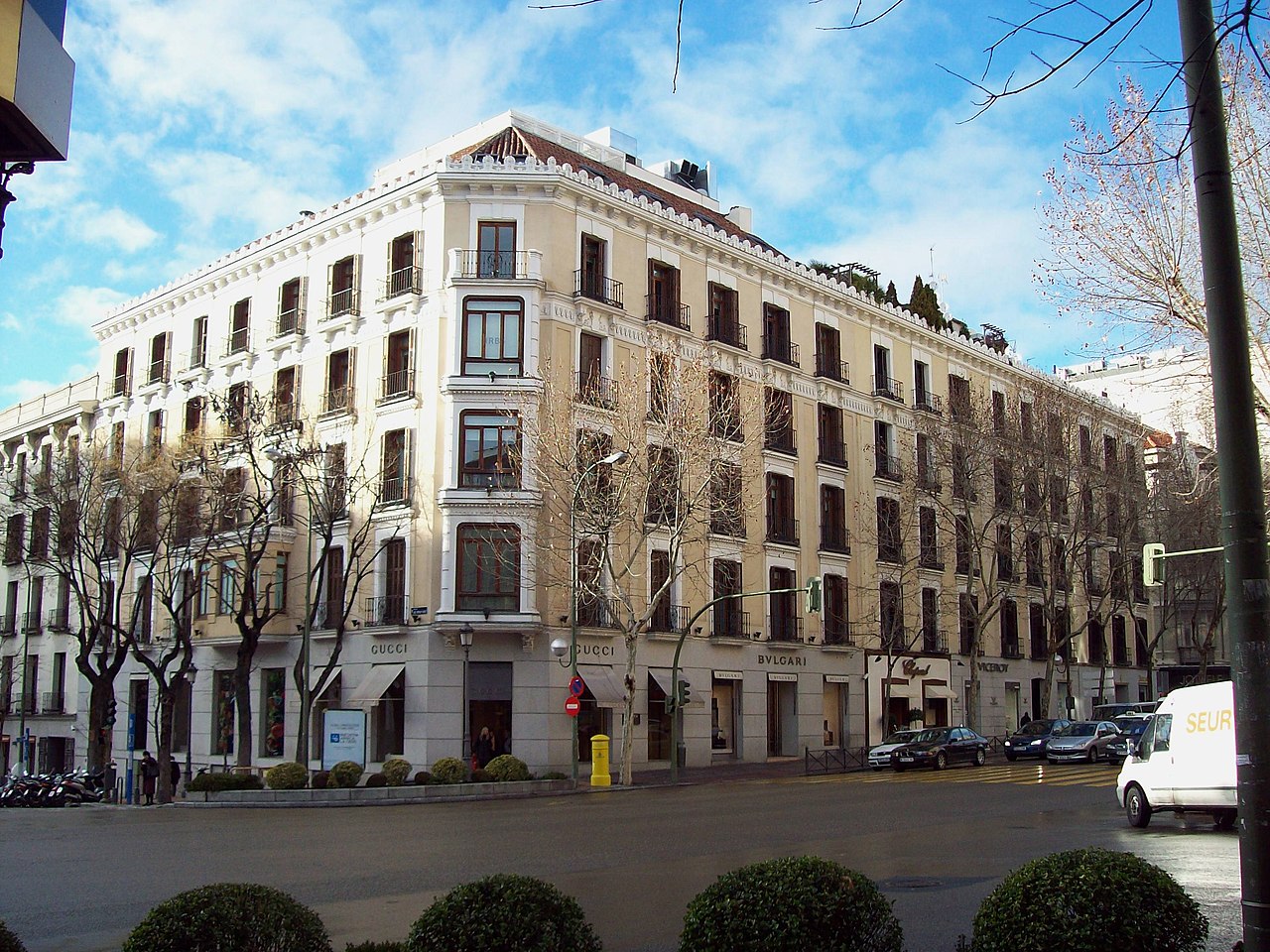
Shops in Serrano street in Madrid
To contemplate the birth of this street we must travel to the sixties of the nineteenth century. The Industrial Revolution it had brought wealth to Spain and the capital was in full swing. The arrival of immigrants to the city, on the one hand, and the appearance of a powerful ruling class, on the other, made Madrid needed to grow.
In this context, one of the most unique characters of that century, the Marquis of Salamanca projected the construction of a whole new neighborhood for the city in the vicinity of Chamartín. The result was precisely the current Salamanca district, with streets like Serrano. In fact, the first buildings were erected in the section of this road that is between those of Goya and Villanueva. Already then, due to the breadth of the land, it was about aristocratic mansions and single-family homes.
It was also Salamanca himself who created the Madrid's first tram line for this area. Its station was located at the corner of Serrano street and Maldonado street and from there the first convoy left on May 31, 1871 in the direction of the central Puerta del Sol.
However, originally, this street was called Narvaez Boulevard. It would be as a result of the revolution of 1868, that she overthrew Isabel II, when she was given the current name. Likewise, it was chosen as a tribute to the military and political Francisco Serrano, one of the architects of the revolutionary movement and who would reach the Headquarters of State. Furthermore, he lived and died at number fourteen on this street.
What to see in Serrano street
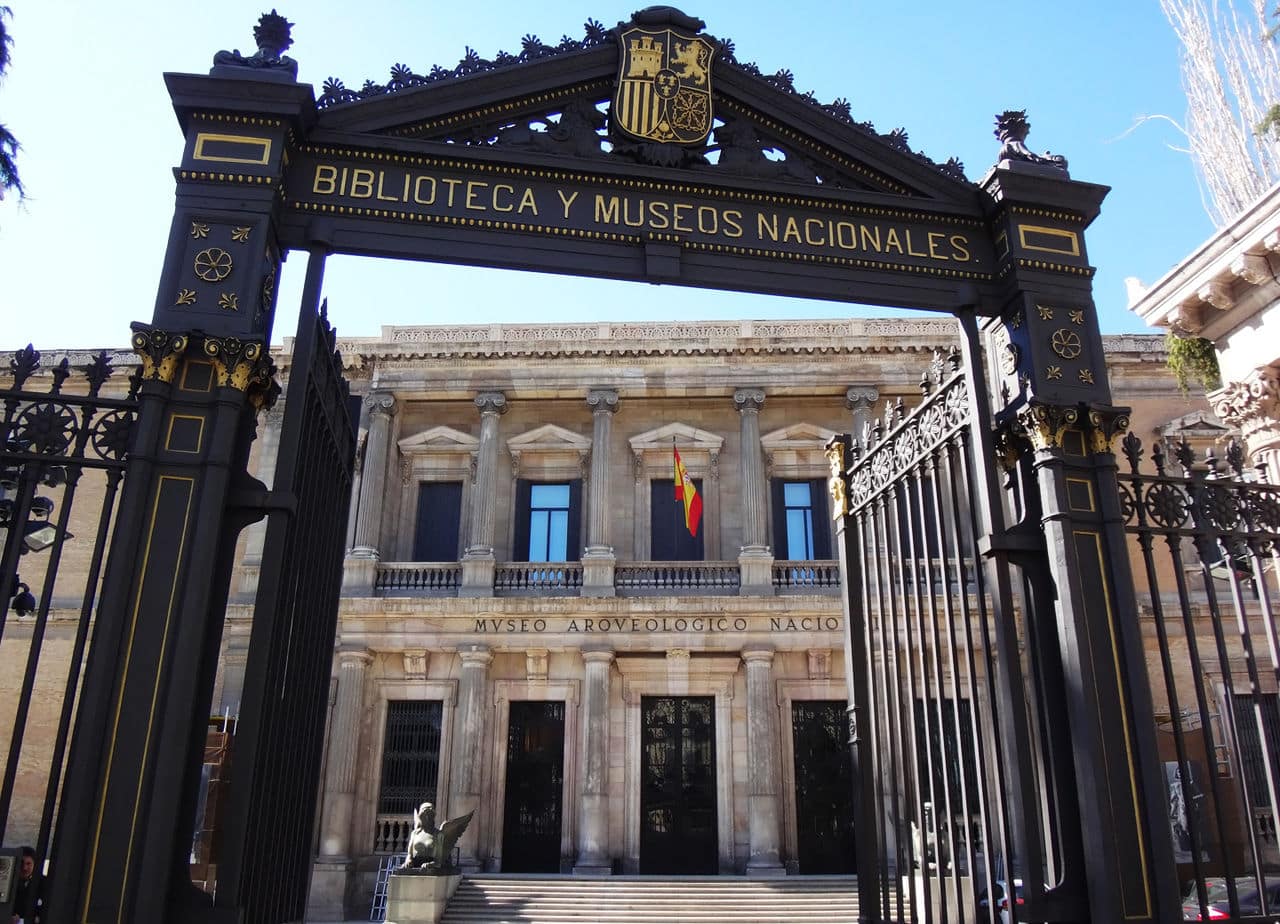
Entrance to the National Archaeological Museum
In view of all that we have told you, it will not surprise you that a street as long and historic as this one has Many interesting places. In fact, there are so many monuments and green spaces that it would be impossible for us to talk about all of them here. They are silent witnesses of their future. Some were even in the place they now occupy before the creation of Calle Serrano in Madrid. So that you know what to see if you approach this route, we will talk about some of its main monumental attractions.
National Archaeological Museum
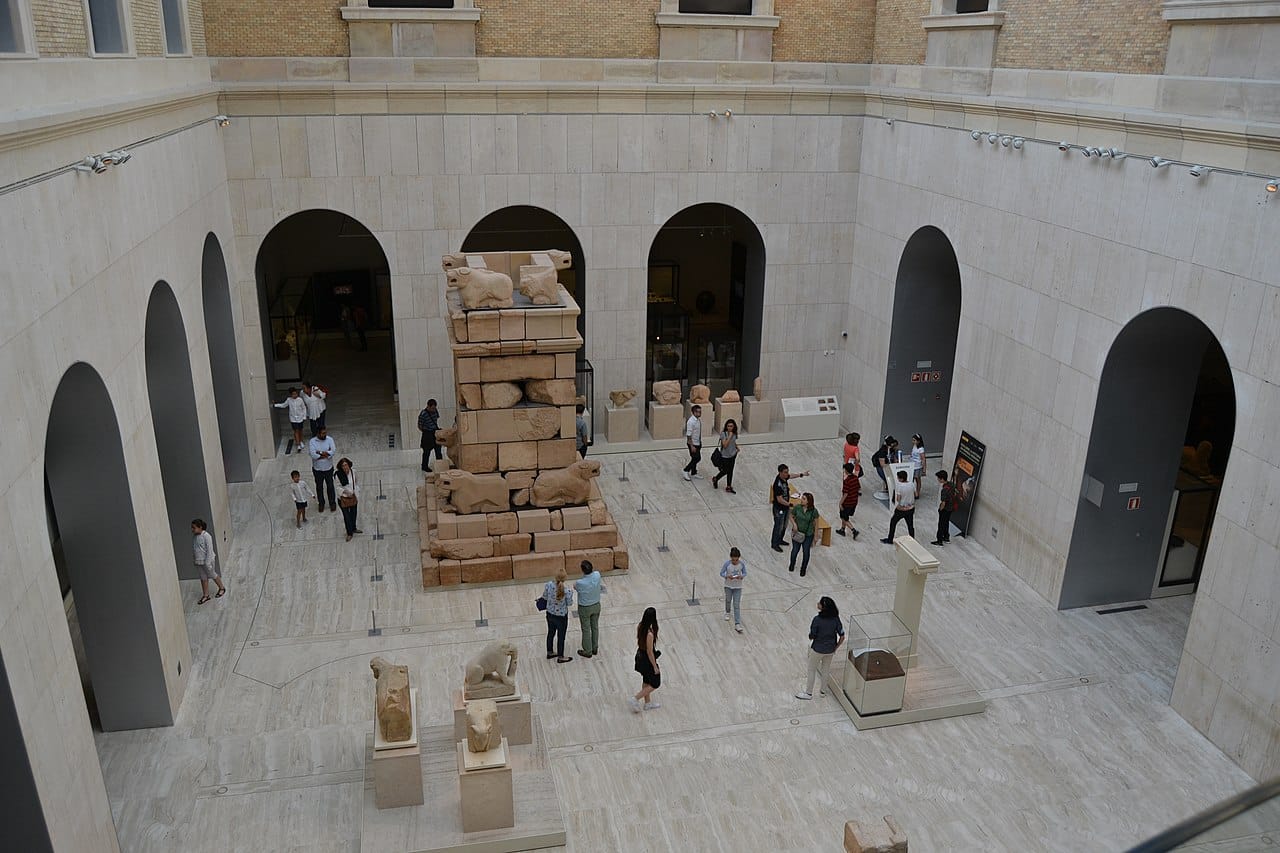
One of the rooms of the Archaeological Museum
It is located in the Palace of National Library and Museum, an imposing neoclassical building from the XNUMXth century due to the architects Francisco Jareño y Antonio Ruiz deSalces. As its name indicates, it shares the headquarters with the National Library and is the most important of its kind in Spain.
It shows pieces found in our country that go from Prehistory to the Modern Age. But it also has collections on ancient Greece, Egypt and the Near East. It even has, in an underground room, a reproduction of the paintings of the altamira cave. Likewise, among its most valuable pieces are the famous Ladies of Elche and Baza, Osuna bull, lioness of baena and those that make up the treasure of Guarrazar.
Puerta de Alcalá
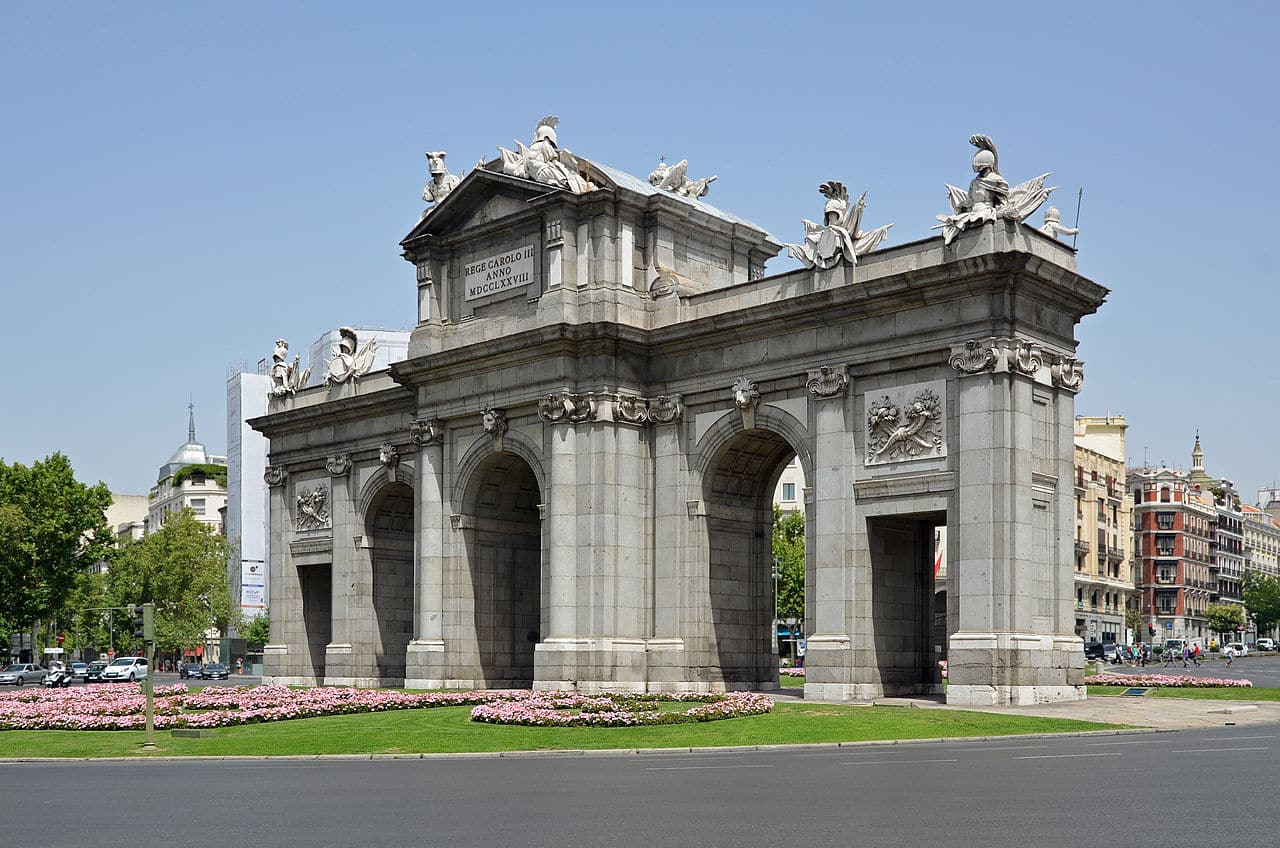
The famous Puerta de Alcalá
Among the monuments on Calle Serrano in Madrid, we cannot fail to mention the popular Puerta de Alcalá, undoubtedly the most famous. But it is not exactly on that road, but on the Independence Square, where Serrano is born and other streets such as Alfonso XII end. In any case, it is a must stop on our visit to Madrid.
It was built in 1778 by order of Carlos III to replace another from the XNUMXth century. At the time, it was the gateway to the city for travelers arriving from France. His manager was Francesco Sabati, one of the most famous architects of his time and to whom we owe other wonders of the capital such as the gardens of the Royal Palace or the Royal Customs House.
Follow the canons of neoclassical and imitates the Roman triumphal arches. It is developed in three bodies, the central one higher than the sides, which house five openings with semicircular and lintelled arches. Also noteworthy are its Ionic capitals and the numerous sculptures that adorn it. The authors of these were, mainly, the Gallic Robert Michael and Spanish Francisco Gutierrez. The four figures of children that crown the monument and that represent the cardinal virtues are due to the latter.
Church of San Francisco de Borja
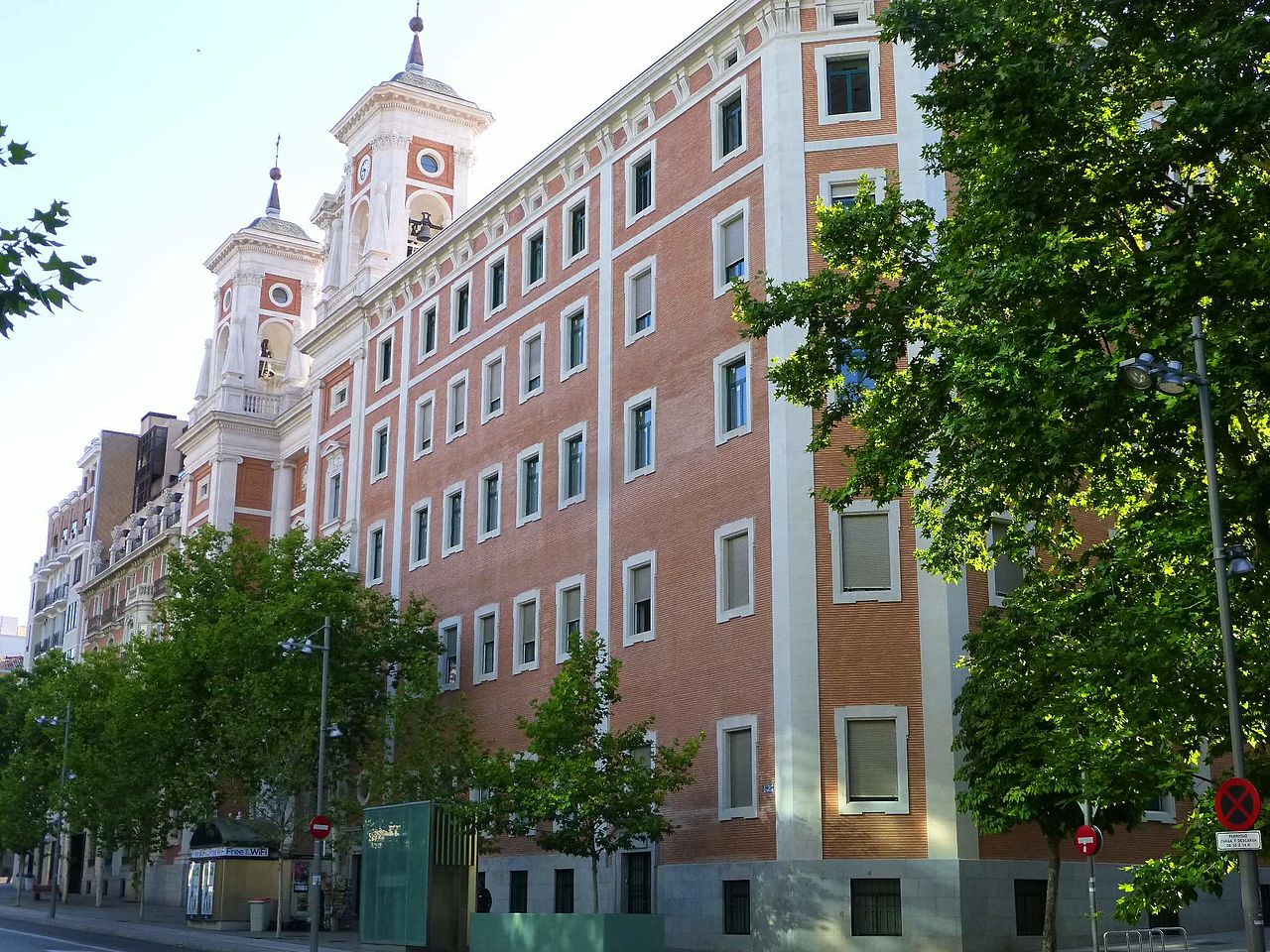
Facade of the church of San Francisco de Borja
It is one of the most beautiful religious monuments on Calle Serrano in Madrid. It was built in the middle of the XNUMXth century by the architect Francis of Assisi Fort, who gave him a neo-baroque style. Its façade stands out with three semicircular arches preceded by a staircase. Above them are three balconies with a lintel between four Ionic columns.
At the top there are as many columns, in this case Doric, and two niches with sculptures. The façade is finished off by a central pediment and two advanced twin towers. Once inside, its balconies and its central dome will catch your attention. It also has two side altars, one dedicated to the Inmaculada Concepción and another to San Francisco de Borja.
The Lázaro Galdiano Museum and other palaces
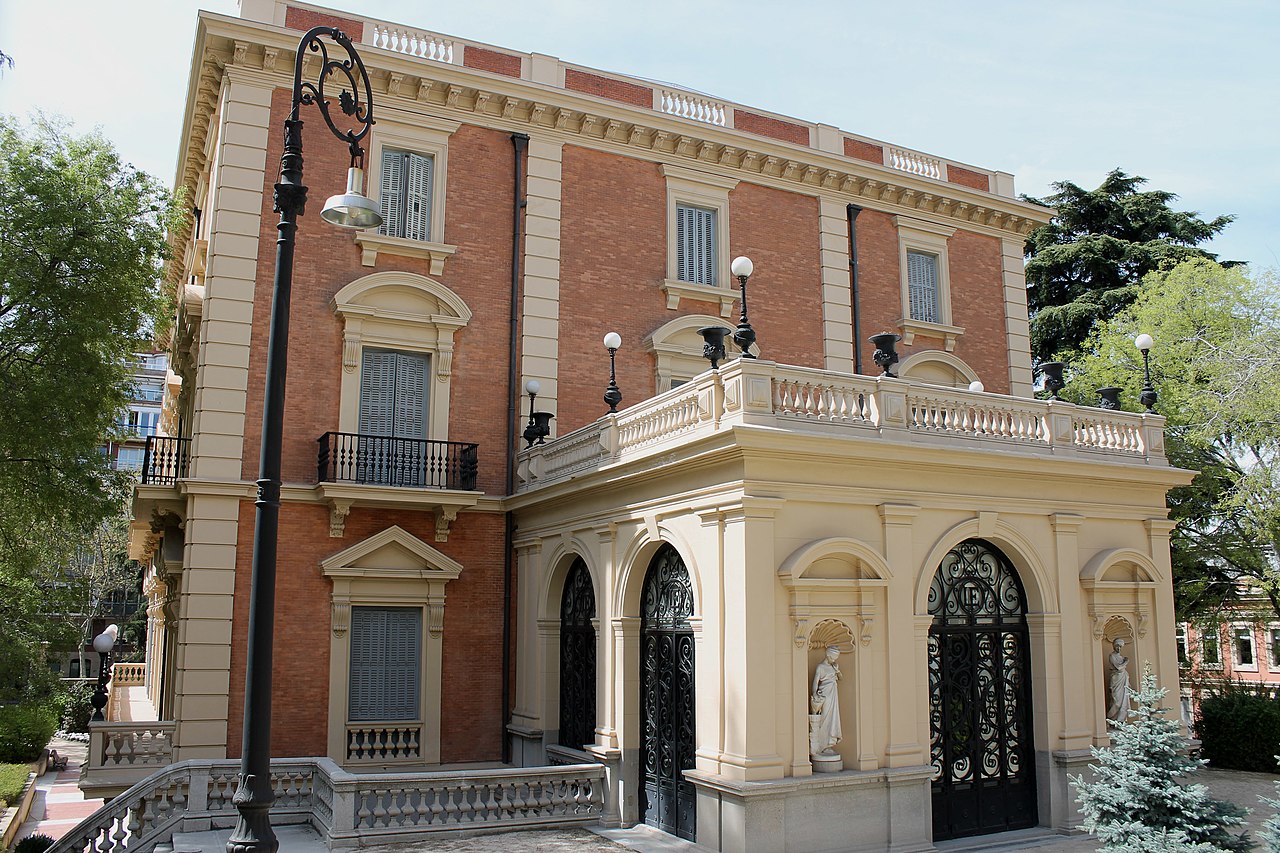
Mansion that houses the Lázaro Galdiano Museum, one of the main attractions on Calle Serrano in Madrid
The museum is located in what was the home of the financier, patron and collector Jose Lazaro Galdiano, located at number 122 of the street. It is a beautiful palace with classical lines built around a central patio to which a portico and a tower were attached. Later, an autonomous pavilion was added, the work of Fernando Chueca that respects the whole.
Inside, the ceilings of the first floor stand out, painted by Eugenio Lucas Villamil, and its marquetry floors. You can also use an old elevator that will catch your attention for its sumptuousness. As for the museum itself, it is miscellaneous, as it houses everything from paintings to old coins.
highlight the call Treasury Chamber, located on the ground floor. It houses precious silver objects that are dated from the XNUMXrd century BC to the XNUMXth century. Regarding painting, it has works by Zurbarán, Bosco, Mengs, El Greco or Sánchez Coello. But one of the jewels of the installation is the painting titled The Young Savior, which comes from Leonardo da Vinci's workshop. Finally, the third floor is dedicated to different collections. Some are as curious as those of ivories, weapons or textiles.
But this is not the only palace that you can see on Calle Serrano in Madrid. As we have already told you, this was originally urbanized to house the homes of wealthy financiers and aristocrats. It is not surprising, therefore, that they competed in luxury and ostentation. Among these constructions, we advise you to look at the Palace of the Viscount of Escoriaza, In the Palace house of the Marquis of Portazgo or Villota palace.
Other constructions of interest in Serrano street in Madrid
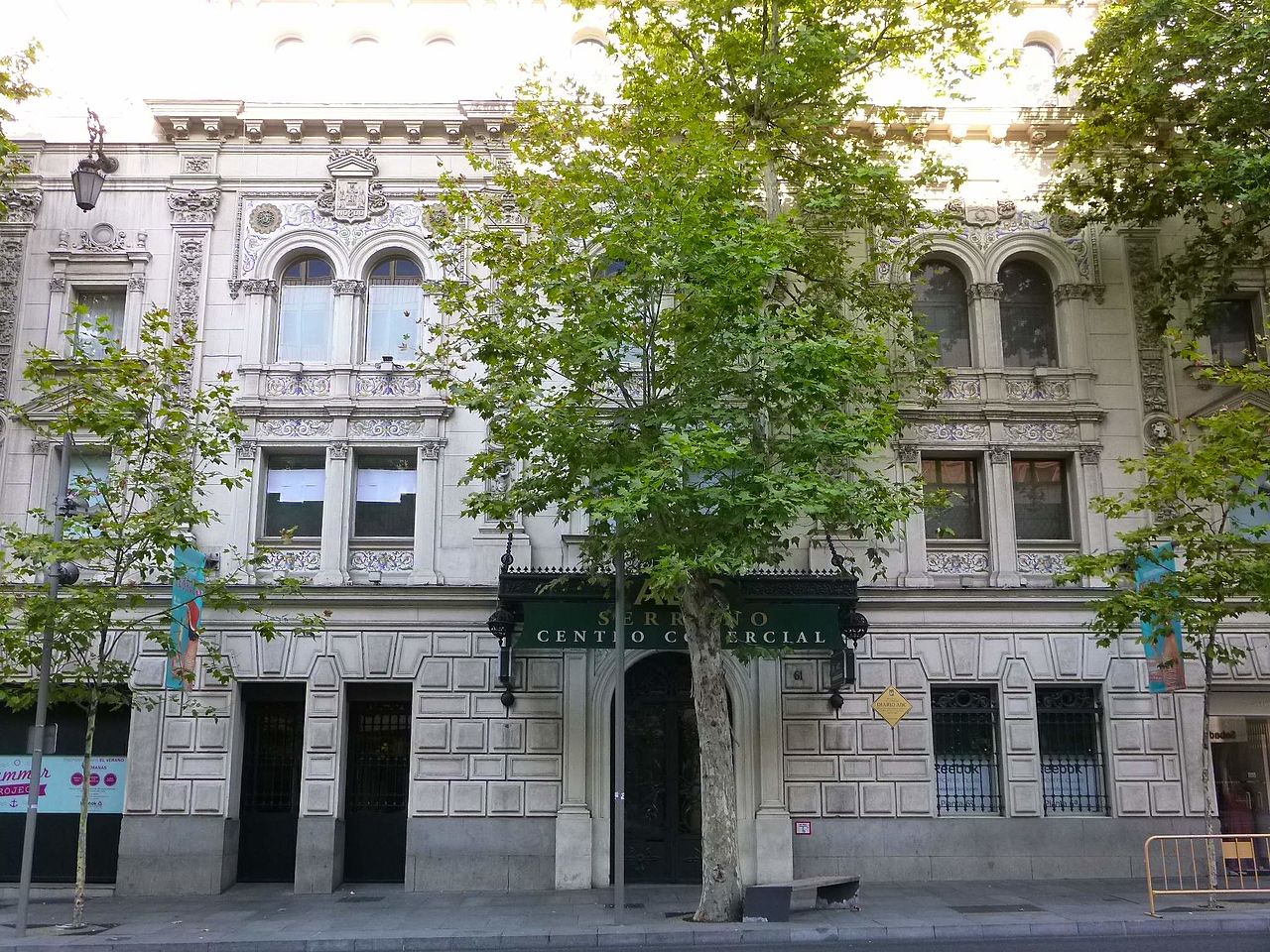
The ABC building on Serrano street
There are many other constructions on Calle Serrano in Madrid that will arouse your interest. Thus, the ABC building, which is at number 61. It is a beauty neoplateresque built in 1899 by the architect Jose Lopez Sallaberry. Subsequently, an extension would be carried out that looks at the Paseo de la Castellana and that presents a Sevillian regionalist style.
No less unique are the buildings that house the Superior Council of Scientific Investigations, work of the urban planner Miguel Fisac, and of the Japanese and American embassies. All this without forgetting the equally famous Plaza de Colón, which is delimited on one of its sides by Serrano street. In this you can see the Discovery Gardens, with the neo-Gothic statue dedicated to Christopher Columbus, and the towers, due to the architect Antonio Lamela.
In conclusion, we have shown you what to see in the Serrano street in Madrid, although, inevitably, other places of interest have been left out of our recommendations. But, above all, we cannot finish without talking to you about something that we mentioned at the beginning of this text. And it is considered the golden mile from the capital of Spain for housing stores of the most exclusive brands in the world. Dare to enjoy everything that this street offers you.